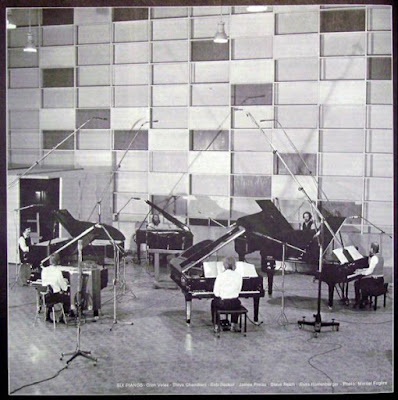The ultimate recording from Steve Reich. Three albums of minimal persuasion and keyboard work that is maximum in scope and sound. Reich's work is not meditative music, but one where the listener has to sit in front of the speakers and let this aural wash come and take you over. I have to presume that these three albums were released separately, but due to some marketing genius on the label has decided to make it into a Box-Set. Going through all three albums in one sitting may be tough, not because of the work itself, but each piece is a demanding presence in one's life. For me, it has an exotic appeal, because I think of mallets coming from a foreign island in the Pacific. Again, what do I know, but that is the visual image I get while listening to "Music for Mallet Instruments, Voices & Organ."
All pieces by Reich strike me as a pattern. When I hear this music, I see structures or things being attached to each other. There is an architectural quality to Reich's compositions. There's a foundation built, and then he adds textures on top of that landscape, and I feel he's building from the ground and then up to the sky. I'm sure there is a spiritual aspect to Reich, but for me, it is more about the mechanics of life, as if it was a cycle. The Four Seasons, Sunday through Saturday, the 24-hour day, I feel all of that is very much part of Reich's aesthetic. So when you go into Reich's world, you have to surrender 'your' sense of time and be merged into the Reich world.







